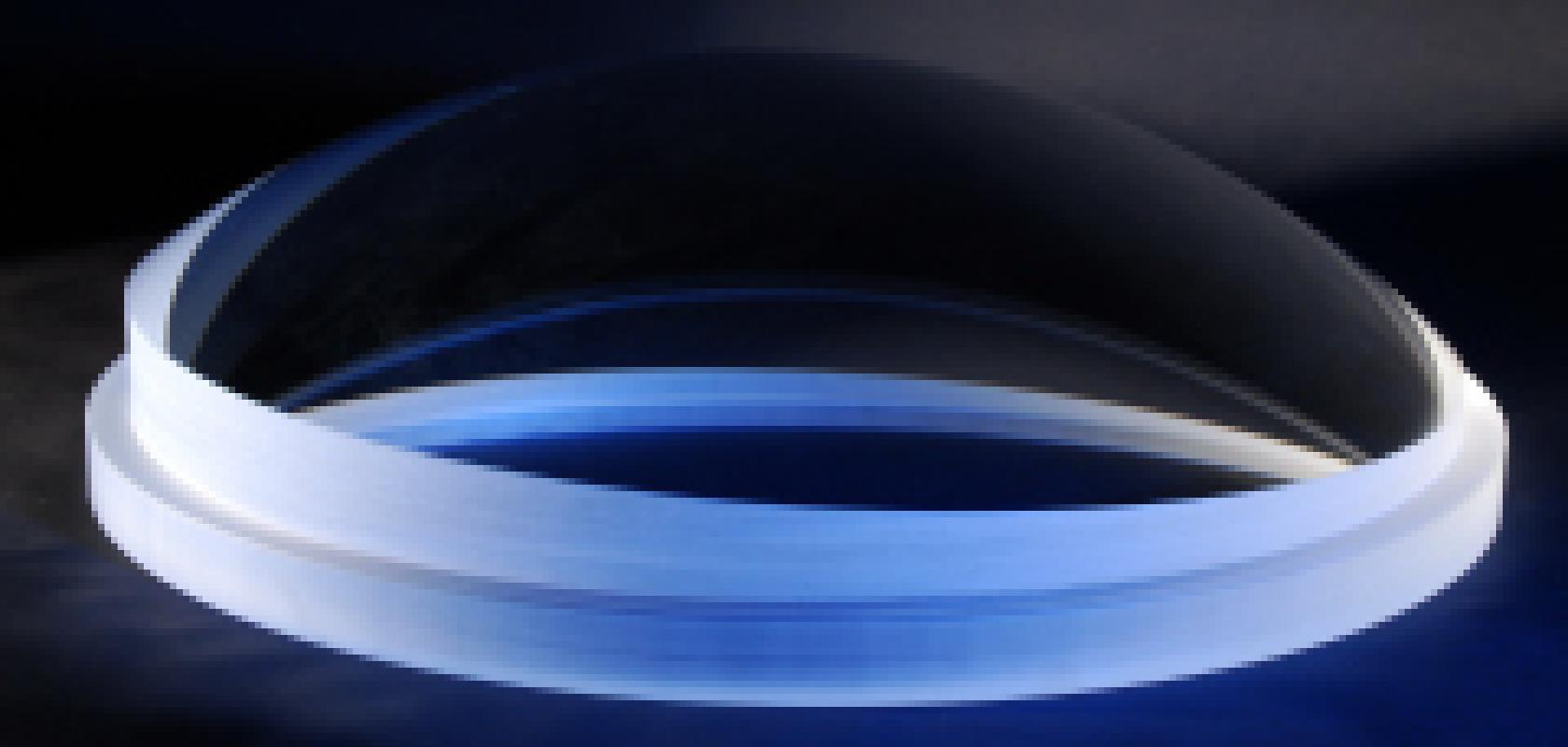Optical Surfaces (Surrey, UK) has delivered five unusual lenses to AMOS (Liege, Belgium), the prime contractor supplying the time delay integration (TDI) optical corrector unit for the International Liquid Mirror Telescope (ILMT). Due to be installed in Devasthal, India, the ILMT will be made up of three main components; a primary rotating mirror, a focal structure and a CCD camera with optical corrector. The primary mirror of the telescope will be a rotating container of mercury, the surface of which takes the shape of a paraboloid. As the primary mirror of the ILMT is parabolic, the off-axis imaging is distorted by spherical, coma and time delay integration (TDI) aberrations. In order to correct these off-axis aberrations and to increase the field of view of the telescope, an optical corrector must be inserted before the CCD camera.
Stefan Denis, project manager at AMOS, commented: 'The lenses manufactured by Optical Surfaces are to be assembled into our TDI optical corrector, which - beside the basic field correction - aims at correcting for the trajectory of stars passing by at the zenith of the ILMT'. The supplied high precision lenses were of various sizes - the largest of which was a 465mm diameter steep meniscus.
Reflecting on the challenges of producing the five challenging lenses for the TDI optical corrector, Dr Aris Kouris, sales and marketing manager of Optical Surfaces, added: 'The absence of any means of adjustment imposed by the system design and the accuracy that the elements had to be placed with respect to each other generated significant challenges in the manufacturing of these elements. Strict tolerances were required in many physical parameters including centre thickness, radii of curvature, relative positions and references. In addition, the lenses had to be machined with a wedge and decentre between the mechanical and the optical axis, while an accurately positioned reference slot would allow the precise positioning of the lenses within the system'.
The size and depth of the larger meniscus lens meant that conventional polishing machines were not adequate to polish the two surfaces. Optical Surfaces built a specially designed polishing machine to allow multiple accurate and synchronised motions to generate the spherical surfaces with the correct radii of curvature and shape. Optical Surfaces verified the validity of the method by using the CMM measuring capability at Rutherford Metrology Facility.


